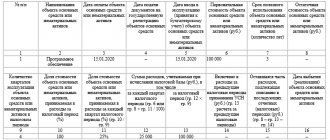Business lawyer > Accounting > Accounting and reporting > What administrative expenses include: accounting features, write-off methods
Paragraph 20 of PBU 10/99 determines that any enterprise has the right to independently determine in its accounting policies how to recognize expenses, including management expenses. They can become part of the cost by type of business activity: production or sale of goods, provision of services, performance of work (letter of the Ministry of Finance No. 07-05-06/191 dated 02.09.208). When developing accounting policies, you should be guided by the Instructions for the chart of accounts.
What are administrative expenses and how do they differ from commercial expenses?
Management costs include costs that do not have a direct connection with the production or sale of goods, services, or work. If costs can be associated with one of the areas of business activity, they are considered commercial (for example, wages and deductions for the head of a production department).
Cost calculation
Management costs can be included in the cost price if they are distributed in proportion to revenue across all types of manufactured products (sold goods, works, services). When developing an accounting policy, an enterprise (organization) must be guided by Law No. 129-FZ and paragraph 4 of PBU 1/2008.
The chart of accounts is developed on the basis of the Plan approved by the Ministry of Finance on October 31. 2000, and based on the scope of activity, legal form, scale and structure of the enterprise. The accounts that will be necessary to account for business activities are selected and supplemented with subaccounts and analytical accounts. If some accounts are not needed, they are not included in the work plan. Administration costs are always included in general business expenses (accounts 26 and 27).
Purpose and purpose
Administrative expenses are used to pay for needs that have a positive impact on the entire company. Of course, not all expenses can be classified as such. Let's look at a small example. If the costs that exist in a particular department do not provide direct or indirect benefits to other departments, they are not classified as administrative.
At the same time, if you maintain an advertising department that will successfully popularize manufactured products, this will lead to an increase in production and, in general, will have a positive effect on the entire enterprise. Thus, the ultimate goal and purpose of any administrative expense is to provide certain benefits.
What is included in management expenses
The composition of this type of costs largely depends on the field of activity, but in general, management costs include funds spent on:
- maintenance of buildings housing administrative personnel: human resources department, legal department, etc.
- salaries and deductions of administrative personnel
- purchasing equipment and office supplies for the office
- office staff business trips
- payment for communication services
Administrative department - entertainment events
- repair of that part of fixed assets that are not related to the main production activity
- depreciation of fixed assets not related to the main production activities
- rental of premises for general purposes
- property and personnel insurance
- auditors, consultants, information providers
- lighting, water supply, heating, sewerage in administrative staff premises
- taxes paid on fixed assets, transport
- enterprise security, measures to ensure fire safety
- labor protection and product certification
- transportation of workers to and from work place
- taxes not related to the production process: water and transport tax, tax on harmful emissions
- management company services
Each enterprise can add or shorten this list if the specifics of business activity require it.
This could include spending on protective clothing and personal protective equipment, printing services, postal services, cleaning, disinfection of premises, maintenance of the yard and road, bathhouses or showers, canteen, and first aid station. This category also includes the costs of training and advanced training, and the search for new employees.
About additional points
It should be noted that there are quite a lot of expenses that are not administrative expenses. These are, for example, sales financing (promotion, organization), advertising events and research into introduced products. It is also necessary to note the specifics that accounting for administrative expenses has.
Typically, when accountants process documentation, they do not identify many types of expenses. Conventionally, they divide expenses into ordinary and other. In the first case, they mean expenses that arise due to the nature of the activity and direction of the organization. Others include everything that does not relate to what was discussed earlier.
Reflection of management costs in accounting
Administrative expenses do not depend on the volume of business activity, so they cannot be written off to “Main production” at the end of the month (account 20). They are taken into account in “General expenses” (D 26).
Features of accounting are that there are two write-off methods:
Reflection in accounting
- traditional - are recognized as conditionally constant and are fully related to the full cost, carried out as K 26, D 90
- based on the division of administrative costs into semi-fixed and semi-variable
When using the second method, the reduced production cost is calculated, conditionally fixed expenses are written off to “Cost of sales” (D 90-2), that is, they are recognized as costs of the reporting period that reduce income.
There are 3 options for writing off the conditionally variable part:
- K 26, D 20 - if they relate to the main production
- K 26, D 23 - if they relate to auxiliary production
- K 26, D 29 - if they relate to service facilities or production
Administrative costs are included in the cost price after the sale of products (goods) and are written off to “Sales” (account 90). The income statement is reflected in line 040.
Some economists express the opinion that administrative costs can be written off on D 91 if there were no sales during the reporting period.
Disputes with the tax office most often arise over expenses for the services of management companies. If there is an agreement, a document confirming payment, and an acceptance certificate for work performed, there should be no claims. Tax authorities may consider this type of service to be economically unprofitable and aimed at tax evasion. Analyzing the decisions made by the courts in similar cases, we can conclude that most entrepreneurs manage to prove that such expenses are justified.
"DELICATE" FEATURE
The administrative budget is one of the most “delicate” budgets. The employee responsible for such a budget should be as non-confrontational as possible. If we take, for example, the production budget, then no matter how opposed the production director is to the numbers, there are strict technological standards for materials and labor costs. In addition, there is comprehensive data on production in several structures: accounting, standardization department, financial and economic planning departments. This data is clearly documented and is sufficient for budgeting purposes.
As for administrative and managerial personnel, directors in charge of one or another area strive to obtain maximum funding specifically for their department.
The first reason : having maximum opportunities, there is no need to ask in the future to pay for necessary but not budgeted expenses.
The second reason is ambition: “Why should I, the HR director, have less funding than the logistics director.” Often similar positions are occupied not only by directors of areas, but also by heads of departments, thus wanting to consolidate their authority.
When the budgeting system encounters misunderstanding and resistance on the part of such managers, neither the economist nor the head of the PEO will be able to eliminate this obstacle on their own. This issue will be beyond their competence. The situation entails either a suspension of the process of budgeting administrative expenses, or adaptation to certain “dissenters”. The latter leads to distortion of the methodology for calculating financial results. As a result, managers make erroneous management decisions and the company suffers losses. This means that the budgeting process should be supervised by the general director or the owner of the company . The slightest resistance or violation of regulations must be strictly suppressed.
essence , goals, objectives and methods of budgeting, it is necessary to conduct a separate seminar ( master class ) for administrative and managerial personnel on budgeting . The seminar should be attended not only by heads of departments and directors of areas, but also by those employees who will be involved in budgeting (from 1 to 3 people from each department, depending on its size and the specifics of the data). After all, it happens that the boss is responsible for the budget for the department, but one of the subordinates works with the numbers, makes the necessary calculations, prepares the data, interacts and consults with the PEO economist.
Financial analysis of management costs
Management costs in financial analysis are classified as semi-fixed, since their value does not depend on production volume. If the volume of products produced (sold) increases, profit per unit increases due to scale.
Difficult economic conditions force entrepreneurs to take a different look at the administration staffing table. Enterprise managers are trying to combine the functions of departments in order to reduce the number of employees. This allows you to reduce costs for salaries, rent, transportation, office equipment, and business trips. The amount saved is the amount of increased profit.
Some choose a different path - reducing wages, allowances and bonuses while maintaining the size of the administrative apparatus. This option is preferable because it does not increase the unemployment rate or reduce employee loyalty.
A good option is to transfer part of the office staff to the “home” mode, which allows saving on rent of premises, utility bills, and official transport. Almost all staff can work via the Internet.
Competent financial analysis allows you to use the optimization of administrative costs as a means of increasing profits. The funds saved on optimizing the management staff can be invested in development, reorganization, renewal, and innovation.
Top
Write your question in the form below
Description
The efficiency of a commercial organization is expressed in the amount of profit received. To facilitate the analysis of the profitability of an enterprise or products sold, a financial result (FR) was introduced. It represents the economic outcome obtained from the difference between the company's expenses and profits. It is calculated using the following formula:
Sample report
VAT (if the company operates on OSNO) and the cost of production, as well as direct and indirect expenses are deducted from the proceeds from the sale of goods.
Many people wonder what financial financial support is in accounting. This definition implies a reporting form that reflects data on the organization’s income, expenses and financial resources. Until 2012, this document was called the “Profit and Loss Statement.” It is compiled by an accountant or chief accountant for the calendar year.
Form 1
Companies are required to submit several financial statements at the end of the year. One of them is compiled according to Form 1 and represents the main financial report on the current state of the company. The balance sheet includes the following items:
- asset (non-current and current);
- liabilities (capital, long-term and short-term liabilities, reserves).
Form 1 presents data for several years at once, so you can see the dynamics of the organization.
Interesting information! Officials have eliminated the numbering of forms, but accountants continue to refer to documents as Forms 1 and 2, respectively.
Form 2
Form 2 of the financial statements is the statement of financial results (FRS). The completed form must be submitted to the tax office at the end of March. Mandatory and timely submission of Form 2 of the balance sheet is enshrined in the Tax Code. If the law is violated, a fine of 200-500 rubles is issued for officials and 3-5 thousand for companies.
Report items
Important information! The report on financial results differs from the balance sheet in that it reflects data from the beginning of the activity, and the FIR shows information only for a specific period of time.







